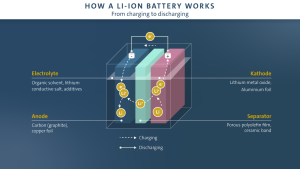3 things you need to know before searching for solar photovoltaic installers

Introduction
PV system is the abbreviation of the solar photovoltaic power system (Solar power system). This is a new type of power generation system that directly converts solar radiant energy into electrical energy by utilizing the photovoltaic effect of solar cell semiconductor materials. As it is gradually applied to home use, there are 3 things you need to know before searching for solar PV companies for your domestic solar system.
How do solar panels generate power?
There are two methods for solar energy generation, one is the light-heat-electric conversion method, and the other is the light-electric direct conversion method.
Light-heat-electric conversion
Power generation through the use of thermal energy generated by solar radiation generally involves a solar collector converting the absorbed thermal energy into a vapor of the working fluid and then driving a steam turbine to generate electricity. The former process is a light-to-heat conversion process. The latter process is a heat-to-electric conversion process.
Light-to-electricity direct conversion
The photoelectric effect is used to directly convert solar radiant energy into electrical energy. The basic device for photoelectric conversion is solar cells. A solar cell is a device that converts solar energy directly into electrical energy with the photovoltaic effect. It is a semiconductor photodiode. When the sun shines on the photodiode, the photodiode will turn the sun’s light energy into electrical energy to produce the Current. When many batteries are connected in series or parallel, a square array of solar cells with relatively large output power can be formed.
How much power can your solar panels generate power?
The solar AC power generation system is composed of solar panels, charge controllers, inverters, and batteries, the solar DC power generation system does not include inverters. For a PV system to be able to supply enough power to its load, it is necessary to reasonably select different components depending on the power of the appliances and this is the part you can decide for yourself before searching for solar PV installers.
As an example to introduce the calculation method, for instance, 100W output power is used for 6 hours a day:
1. First, calculate the number of watt-hours consumed per day (including the loss of the inverter): if the conversion efficiency of the inverter is 90% when the output power is 100W, the actual output power required should be 100W/90 %=111W; if it is used for 5 hours a day, the output power is 111W*5 hours=555Wh.
2. Calculate the solar panel: Calculate according to the daily effective sunshine time of 6 hours, and take into account the charging efficiency and the loss during the charging process, the output power of the solar energy panel should be 555Wh/6h/70%=130W. Among them, 70% is the actual power used by solar panels during the charging process.
Classification of photovoltaic solar panels
Monocrystalline solar panels
Before searching for the right solar PV installers, you want to at least learn about which type of solar panels you are looking for. The photoelectric conversion efficiency of monocrystalline silicon solar panels is about 15% and up to 24%. This type of solar panel is the highest photoelectric conversion efficiency of almost all types of solar panels. However, the production cost is so high that it cannot be widely used yet.
Single crystal silicon is generally encapsulated in tempered glass and waterproof resin, so it is durable and has a service life of up to 15 to 25 years.
Polycrystalline silicon solar panels
The manufacturing process of polycrystalline silicon solar panels is the same as that of single-crystal silicon solar panels, but the photoelectric conversion efficiency of polycrystalline silicon solar panels needs to be significantly reduced, and the photoelectric conversion efficiency is about 12%.
In terms of manufacturing cost, it is cheaper than single crystal silicon solar panels, easier to manufacture, consumes less power, and has a lower total manufacturing cost, so it has been developed in large quantities.
What’s more, in comparison, the service life of polycrystalline silicon solar panels is shorter than that of monocrystalline silicon. In terms of cost performance, the type of solar panel mentioned above is slightly better.
Amorphous silicon solar panel
An amorphous silicon solar panel is a thin-film solar panel that appeared dates back to the year 1976. It is completely different from monocrystalline silicon and polycrystalline silicon solar panels. It greatly simplifies the process, consumes less silicon material, and consumes less power. The main advantage is that it can generate electricity in low-light conditions. Nevertheless, the key problem with this type of solar panel is that its conversion efficiency is low. The international advanced level is about 10%, and it is not stable enough. Over time, its conversion efficiency will decrease.
Conclusion
By understanding the power generation principle of the photovoltaic solar system, the calculation of power generation, and the classification of photovoltaic solar panels, I think now you are confident to find the right solar photovoltaic installers for yourself. To learn more information about PV solar panels, you may find all your answers on Maxworld Power.














After exploring a few of the blog posts on your
blog, I honestly like your way of blogging. I saved as a favorite it to my bookmark website list and will be checking back soon. Please check out my web site as
well and let me know how you feel.